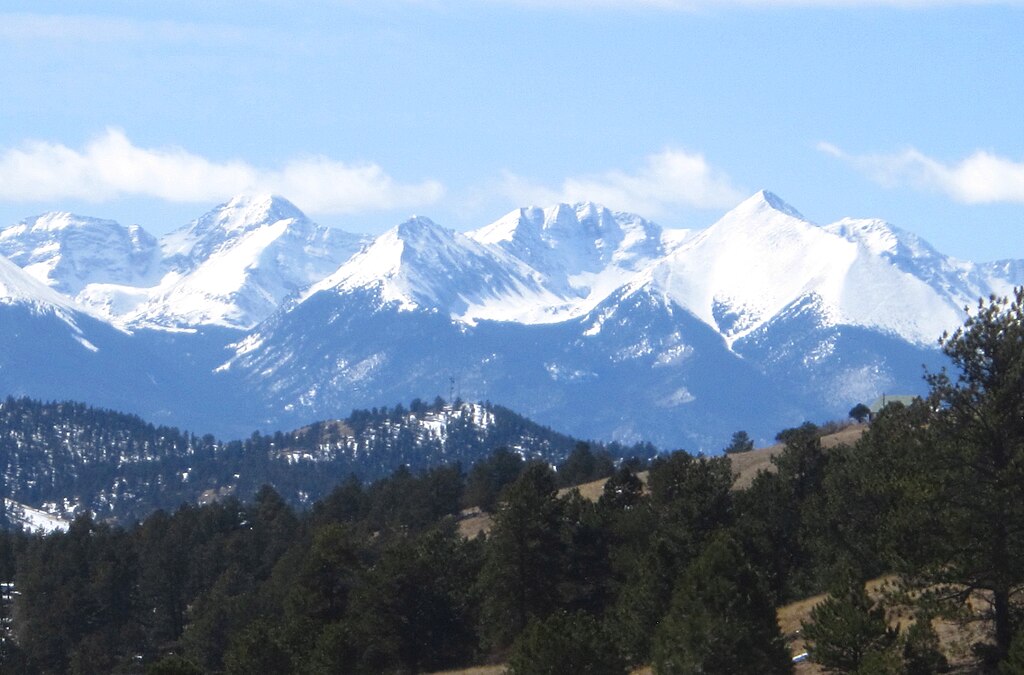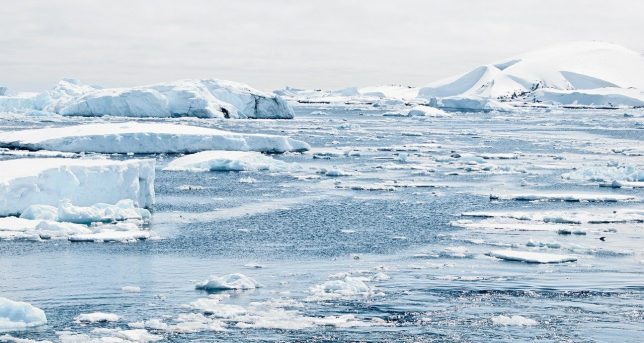
Sangre de Cristo range seen from CO Hwy 96. Credit: Hogs555, CC BY-SA 3.0, via Wikimedia Commons.
Lessons from the Sangre de Cristo Mountains
Glaciers are nature’s icy giants, carving valleys, shaping mountains, and storing vast amounts of Earth’s freshwater. These massive formations weigh millions of tons, pressing down on the Earth beneath them. However, glaciers are melting faster than ever before due to climate change, and this rapid loss of ice is more than just a sign of a warming planet—it’s affecting the very ground we walk on.
A fascinating study in the Sangre de Cristo Mountains in Colorado reveals a surprising consequence of melting glaciers: earthquakes. This discovery shows us how closely connected the Earth’s surface and its icy cover truly are.
What This Study Found
The Sangre de Cristo Mountains, stretching across southern Colorado, are a stunning example of nature’s grandeur. Long ago, glaciers covered these peaks, leaving behind U-shaped valleys and other evidence of their presence. Scientists wanted to understand what happened to the Earth’s crust when these glaciers melted, a process called deglaciation.
- Using advanced tools like satellite imagery and computer models, scientists reconstructed how these glaciers used to look and how they melted over time.
- They found that when the glaciers melted, the immense weight pressing down on the Earth was removed. This caused the ground to “bounce back” in a process called isostatic rebound.
- This rebound created stress along underground cracks in the Earth, called faults, making them more likely to move and trigger earthquakes.
The key takeaway? Melting glaciers can lead to shifts in the Earth’s crust that cause earthquakes, a phenomenon observed in the Sangre de Cristo Mountains.
How Glaciers and Faults Are Connected
To understand this better, let’s think about glaciers as nature’s heavyweights. They press down on the Earth’s crust, similar to how you might press your hand into a soft cushion. When you lift your hand, the cushion bounces back, and the same thing happens to the Earth when glaciers melt.
Here’s what happens in detail:
- Weight Removed: Glaciers’ immense weight compresses the Earth. When they melt, that pressure is gone.
- Earth Adjusts: The ground slowly rebounds upward, but this creates stress along faults—cracks in the Earth’s crust.
- Faults Move: These stresses can push faults to move, which is what causes earthquakes.
The Sangre de Cristo study focused on this process in the past, providing valuable clues about how today’s rapidly melting glaciers might lead to similar effects in the future.
Why This Matters Today
Climate change is causing glaciers to melt faster than ever. From the towering peaks of the Himalayas to the icy expanse of Greenland, glaciers are retreating at alarming rates. This isn’t just about rising sea levels; it’s also about what’s happening beneath the surface of the Earth.
- Regions at Risk: Areas with large glaciers, such as Alaska, Greenland, and parts of the Andes, are experiencing significant ice loss.
- Increased Earthquake Activity: The stress caused by melting ice could make faults more active, leading to more frequent or stronger earthquakes.
- Uncertain Future: Scientists are still learning about the full impact, but the Sangre de Cristo study highlights the risks we might face as glaciers continue to vanish.
Understanding these connections is crucial. It reminds us that the effects of climate change reach far beyond what we see—they extend deep into the Earth.
What Can Be Done
While the link between melting glaciers and earthquakes might sound alarming, there’s good news: we can take action to reduce these risks. Here’s how:
- Slow Glacier Melt: Reducing greenhouse gas emissions can slow the pace of climate change and give glaciers more time.
- Prepare for Risks: Understanding these processes helps communities prepare for potential seismic activity in glacier-rich regions.
- Support Climate Policies: Encourage leaders to adopt policies that reduce emissions and promote sustainable energy.
- Stay Informed: Learning about the impacts of climate change empowers us to take meaningful action in our lives and communities.
By acting now, we can protect not only glaciers but also the ecosystems, communities, and landscapes connected to them.
Summing Up
Melting glaciers are more than a symbol of climate change—they’re a force that can reshape the Earth itself. The study of the Sangre de Cristo Mountains shows us how closely tied the Earth’s crust is to these icy giants. When glaciers disappear, the ground responds, sometimes with seismic consequences.
But there’s hope. By reducing emissions, supporting research, and staying informed, we can slow the impacts of climate change and create a safer, more sustainable future. Together, we can protect our planet—and ourselves—from the cascading effects of a warming world.
Source: Hurtado, C., & Gallen, S. F. (n.d.). Exploring the impact of deglaciation on fault slip in the Sangre de Cristo Mountains, Colorado [Supplementary materials]. Colorado State University, Department of Geosciences.

